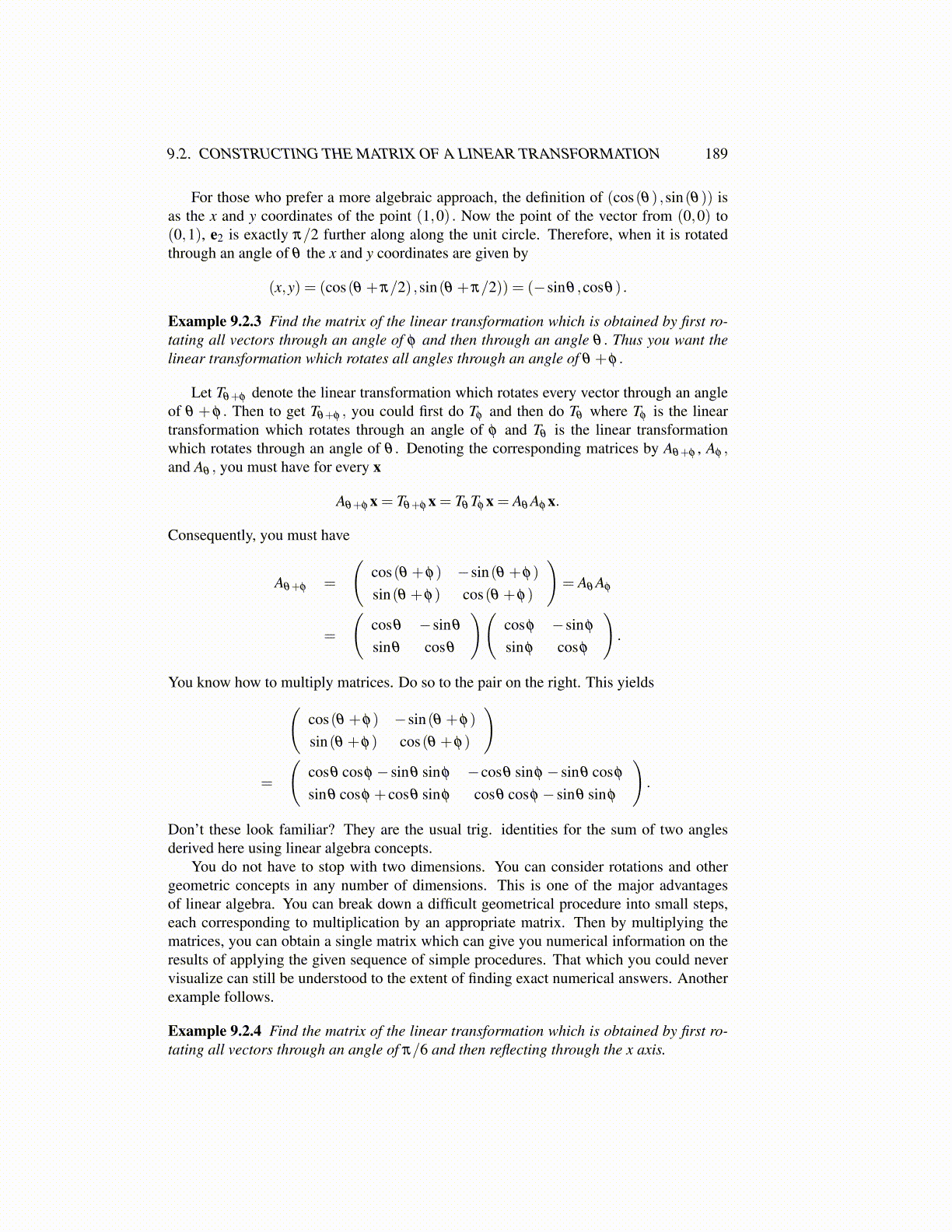
9.2. CONSTRUCTING THE MATRIX OF A LINEAR TRANSFORMATION 189
For those who prefer a more algebraic approach, the definition of (cos(θ) ,sin(θ)) isas the x and y coordinates of the point (1,0) . Now the point of the vector from (0,0) to(0,1), e2 is exactly π/2 further along along the unit circle. Therefore, when it is rotatedthrough an angle of θ the x and y coordinates are given by
(x,y) = (cos(θ +π/2) ,sin(θ +π/2)) = (−sinθ ,cosθ) .
Example 9.2.3 Find the matrix of the linear transformation which is obtained by first ro-tating all vectors through an angle of φ and then through an angle θ . Thus you want thelinear transformation which rotates all angles through an angle of θ +φ .
Let Tθ+φ denote the linear transformation which rotates every vector through an angleof θ + φ . Then to get Tθ+φ , you could first do Tφ and then do Tθ where Tφ is the lineartransformation which rotates through an angle of φ and Tθ is the linear transformationwhich rotates through an angle of θ . Denoting the corresponding matrices by Aθ+φ , Aφ ,and Aθ , you must have for every x
Aθ+φ x = Tθ+φ x = Tθ Tφ x = Aθ Aφ x.
Consequently, you must have
Aθ+φ =
(cos(θ +φ) −sin(θ +φ)
sin(θ +φ) cos(θ +φ)
)= Aθ Aφ
=
(cosθ −sinθ
sinθ cosθ
)(cosφ −sinφ
sinφ cosφ
).
You know how to multiply matrices. Do so to the pair on the right. This yields(cos(θ +φ) −sin(θ +φ)
sin(θ +φ) cos(θ +φ)
)
=
(cosθ cosφ − sinθ sinφ −cosθ sinφ − sinθ cosφ
sinθ cosφ + cosθ sinφ cosθ cosφ − sinθ sinφ
).
Don’t these look familiar? They are the usual trig. identities for the sum of two anglesderived here using linear algebra concepts.
You do not have to stop with two dimensions. You can consider rotations and othergeometric concepts in any number of dimensions. This is one of the major advantagesof linear algebra. You can break down a difficult geometrical procedure into small steps,each corresponding to multiplication by an appropriate matrix. Then by multiplying thematrices, you can obtain a single matrix which can give you numerical information on theresults of applying the given sequence of simple procedures. That which you could nevervisualize can still be understood to the extent of finding exact numerical answers. Anotherexample follows.
Example 9.2.4 Find the matrix of the linear transformation which is obtained by first ro-tating all vectors through an angle of π/6 and then reflecting through the x axis.